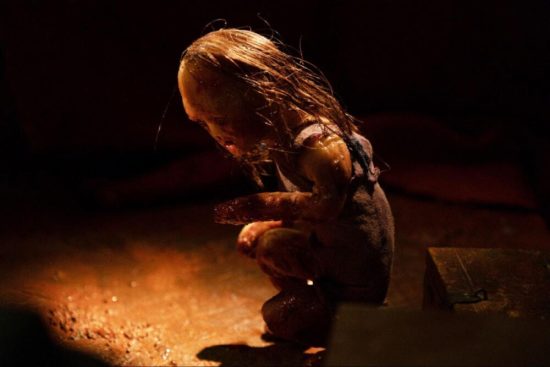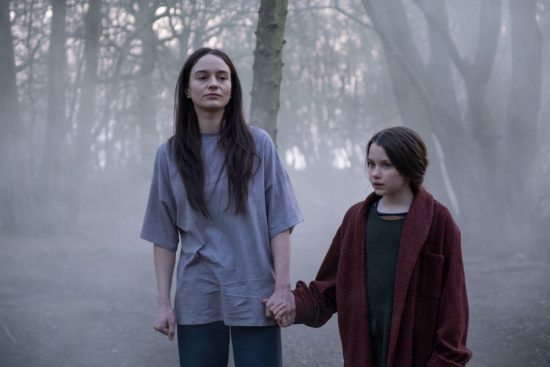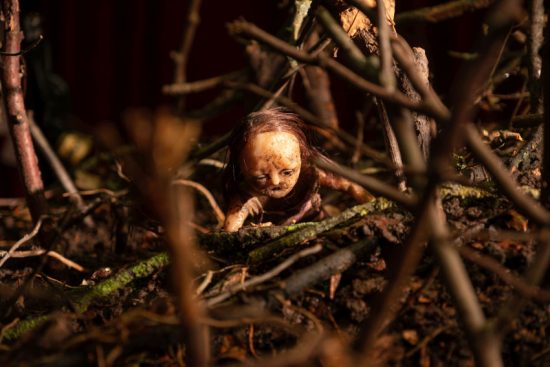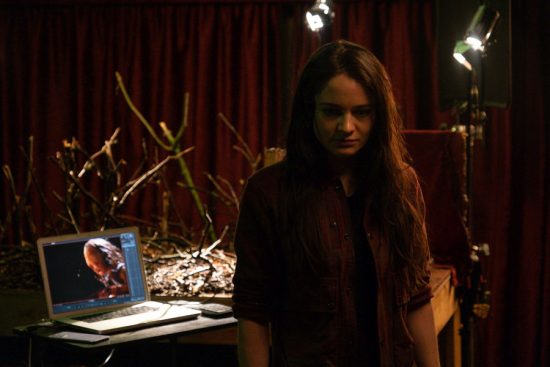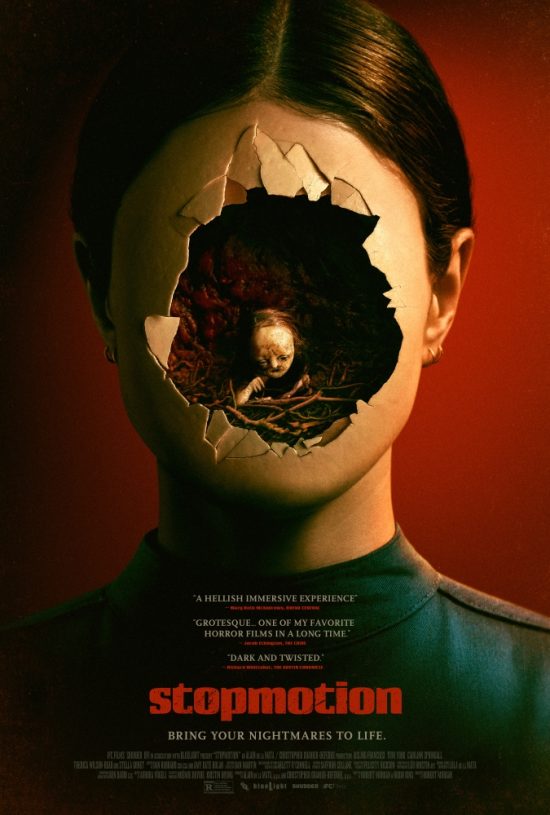Review: Stopmotion – “delightfully disturbing and unsettling viewing”
Directed by Robert Morgan
Starring Aisling Franciosi, Stella Gonet, Tom York, Caoilinn Springall, James Swanton
I have been eager to see this film since Phil posted the trailer here on LFF; a lifelong love of animation (especially stop-motion work), and of horror, this film was calling to me. I’m delighted to report that I was not disappointed – this is one of the more unusual British horrors of recent years, delving into psychology, family ties versus our own urge to create our own path, and the lengths an artist will go to when creating something. Just how much of yourself can you pour into your creation without endangering your sense of self and the real world around you?
Ella (Aisling Franciosi) is a young animation artist, but instead of forging her own path, she’s spinning her wheels, helping her mother Suzanne (Stella Gonet) with her work. Her mother is a revered figure in the world of animated film – one friend comments how her work was required viewing at art college – but age and progressive illness have robbed her hands of their once finely tuned skills, so Ella is effectively now her hands, painstakingly setting up each frame of her mother’s final stop-motion film, millimetre by millimetre.
It’s work which requires a huge investment of time and attention, time she should be spending carving out her own artistic identity and work (as it opens the two women are even dressed alike), so Ella is chafing, and it doesn’t help that her mother is overbearing and seems quite uncaring about the demands she is making on her daughter, which increases her resentment. Interestingly Franciosi and Morgan opted to show this simmering resentment not through explosive anger, but through a far more nuanced and subtle performance. Just like the demanding art she works at.
Ella is good at keeping herself relatively still, emotionally as well as physically, instead allowing only small changes in expression and body language to hint at the growing tempest within her; it’s a damned fine bit of acting craft on her part. When illness puts her mother in the hospital, at first Ella considers finishing her film for her, but she really wants to create her own, and realises this is her chance at last. Her boyfriend arranges for her to borrow an empty apartment in an almost deserted block of flats to use as a nice, quiet studio space, and she sets herself up to… Realise that now she has the time, she’s not sure what story she wants to tell (I’m sure many of us who have created works have experienced that phenomenon, our best ideas seem to come when we don’t have time to work on them!).
It’s at this point she meets the only other person she ever seems to see in the building, Caoilinn Springall’s unnamed young girl, who with a child’s curiosity asks what she is doing and if she can look. And with that lack of filters that kids have she is quite blunt in telling Ella that her ideas aren’t good, and instead proposing some story ideas of her own. Slowly she starts to make a new story, a quite disturbing-looking one, about the figure of a woman in fear, fleeing through a forest, being pursued by a slow but relentless being, the Ash Man.
As the girl encourages her not just to change the story, but to start using, shall we say “unusual” material for creations, including raw meat, or organic items instead of the usual metal armature skeleton inside her figures. And it is at this point that Ella’s imagination and work and the real world start to overlap one another – the stress and resentment of looking after her ailing mother, of carrying out work for an ungrateful person, of feeling her own life has been left behind, finally starts to seep out from this seemingly quiet, centred woman.
This is a beautifully made film, and it is quite clear Morgan and his crew have gone to great lengths to craft each scene to be just so. Even at the opening of the film this is obvious – we see Ella in a nightclub, lit by flickering strobe lights, their periodic bursts making the dancers around her appear to be almost stop-motion figures themselves, while with each flash of the strobes Ella’s facial expressions change. It was a statement of intent made right at the start of the film, and one I felt they adhered to throughout.
It’s delightfully disturbing and unsettling viewing, the psychological elements, the stop-motion moments, the clever cinematography and the use of sound and music (the soundscape is superb and compliments the visuals perfectly) all work together, while the creepy nature of inert items being brought to life is mined well, making nods to creators like the great Jan Švankmajer (the “Prague’s alchemist of film”) and the Brothers Quay among others. Slowly building horror, disturbing, atmospheric, visually and aurally beautiful, this one is highly recommended.
Stopmotion from IFC is released in cinemas from February 23d, and on streaming from March 15th

